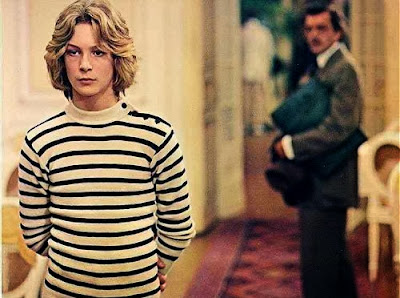Music does not exist in a vacuum

Benjamin Britten in reflective mood outside the Old Mill at Snape while completing Peter Grimes in 1945. That opera, like all of Britten's output, is a mystical fusion of music and place. We talk of Britten's Aldeburgh, Bach's Leipzig, Elgar's Malvern, and Bernstein's New York, yet the relationship between music and place is only just starting to be explored by pioneering projects such as musicDNA.
That mystical fusion of music and place appeared again a few days ago in an email from Alex Ross -
I first heard that Korngold recording in high school — there was a wonderful art room with a no less wonderful record collection curated by an art teacher who had since passed away. I would play it at maximum volume late at night.Alex's anecdote resonated with me as I too have an extraordinarily strong recall of music and place, to the point where I can remember where and when I first heard many pieces of music. So strong is the recall that I have sometimes wondered if there is a spatial equivalent of synaesthesia. Support for a link between music and place comes from the influential philosopher and educationist Rudolf Steiner. His living idea concept proposes both that ideas have life of their own, and that living with an idea in one's mind predicates living differently.
Accepting that music and place are living ideas that interact with the listener takes us down some exciting new paths. Already the spatial dimension has provided the only two major music success stories of recent years - multi-channel home cinema systems, with their spatially enhanced sound, and portable media players, which take music to new places. Place is starting to be recognised as an important part of the performace equation and innovative new spaces are being explored. These include live music in a geodesic dome, on a floating stage, on a Cold War bomber base, on a cruise ship, inside a prison, and even in a circus ring.
Classical music desperately needs new audiences. But virtually all efforts to find one have been directed at attracting new listeners to the same music in the same place, which is usually a conventional concert hall complete with all its associated baggage. Is the resistance of new audiences lowered if the music is experienced in a neutral place? Is the key to reaching new audiences location, location and location? Is the concert hall as architectural icon as doomed as the tuxedo? Will traditional concert halls and opera houses be victims of a 'perfect storm' triggered by the collision of economic turbulence, environmental concerns and the demands of new audiences? Is classical music a living idea that can only breathe in the future if it escapes the vacuum of the concert hall?
* Alex Ross also kindly pointed out a book by the American musicologist Denise von Glahn titled The Sounds of Place and provided a link to his own post on the Korngold symphony. From my own bookshelf I have picked out A Musical Gazetteer of Grat Britain & Ireland by Gerald Morris and Musical Landscapes by John Burke, both long out-of-print.
* My headline is provided by Britten's 1964 Aspen Award acceptance speech in which he said -
I also take note of the human circumstances of music, of its environment and conventions ... music does not exist in a vacuum.Any copyrighted material on these pages is included as "fair use", for the purpose of study, review or critical analysis only, and will be removed at the request of copyright owner(s). Report broken links, missing images and errors to - overgrownpath at hotmail dot co dot uk









Comments
But, of course, vacuums exist in music (and I don’t mean the emptiness of Lady GaGa, either!): Sir Malcolm Arnold’s A Grand Grand Overture, discussed on your blog many many times.
Cheers
David Cavlovic
http://conservatorium-mj.blogspot.com/
http://www.musicdna.info/musicGPS.aspx
@WD - If only it had been around in 1980...!